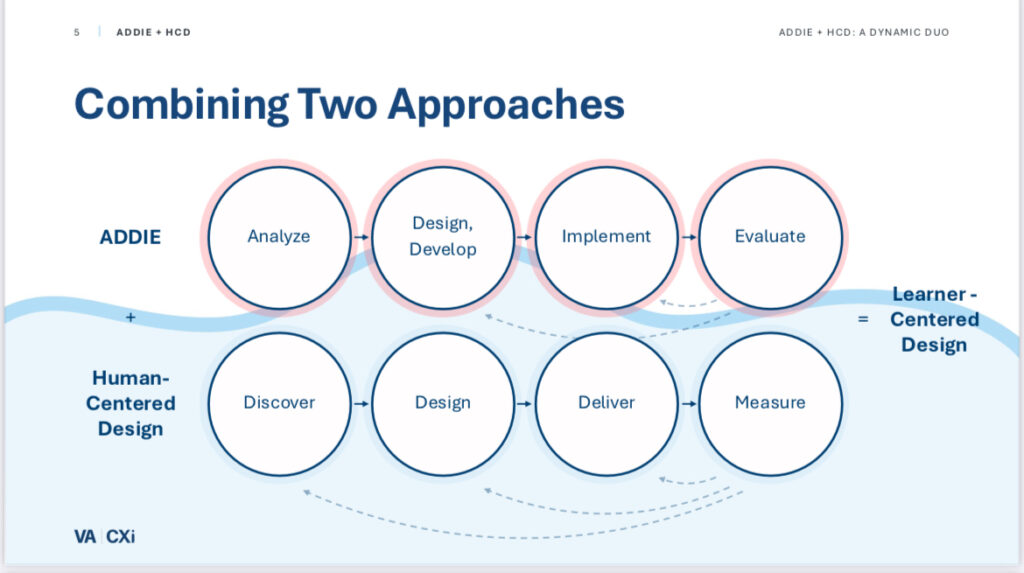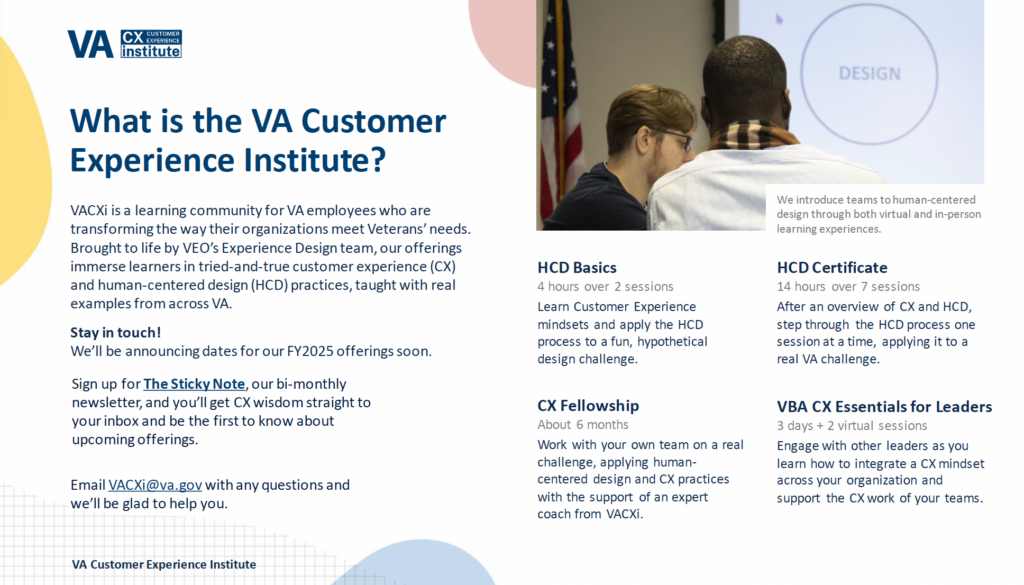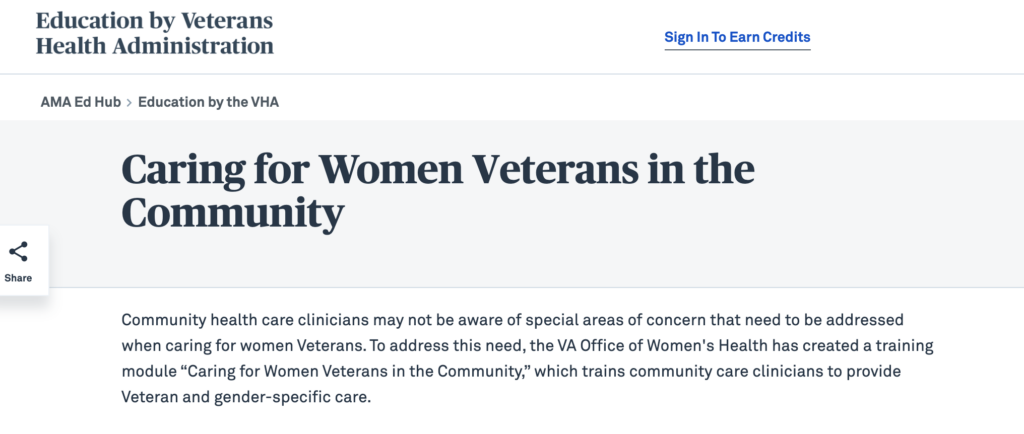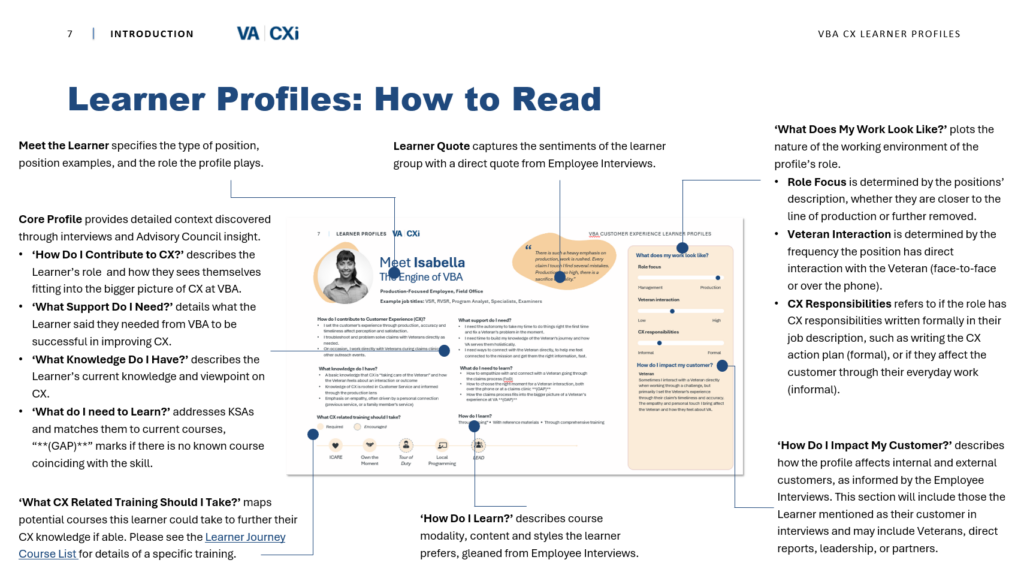I blend human-centered design principles into every step of the instructional design process, to ensure both organizational and learner needs are met.
ADDIE + HCD Framework – Innovating Learner-Centered Instructional Design

Context & Challenge:
Traditional instructional design models often lack the flexibility to address diverse learner needs. I led a team to innovate learner-centered instructional design methodologies by integrating human-centered design principles into the established ADDIE framework.
My Role:
- Spearheaded the integration of HCD principles into ADDIE.
- Presented the ADDIE + HCD methodology at ISPI’s annual international conference and to various audiences within the Department of Veterans Affairs.
Why It Matters:
This approach ensures that both organizational objectives and learner needs are met, resulting in more effective and engaging learning experiences.
Customer and Employee Experience (CX and EX) Courses – Moving the Needle Toward Culture Change at the Department of Veterans Affairs

CX Essentials for Leaders
Context & Challenge:
To foster a culture centered on customer and employee experience, I led the design, development, and implementation of a leadership course focused on incorporating CX into every aspect of leadership.
My Role:
- Developed and delivered a leadership course that integrates CX principles.
- The course received the ISPI Outstanding Human Performance Intervention Award in 2024.
- ROI for this course is 19:1 BCR.
Why It Matters:
This initiative has driven impactful change for teams and program offices, promoting a culture that values customer and employee experiences.
Human-Centered Design Certificate
To institutionalize human-centered design within the organization, I led the strategic sustainment and continuous improvement of a comprehensive certificate program focused on HCD.
My Role:
- Oversaw the development and enhancement of the HCD certificate program.
- Ensured the program’s alignment with organizational goals and learner needs.
- Developed comprehensive evaluation strategy for the program.
Why It Matters:
Program evaluations consistently show that HCD Certificate alumni apply the mindsets and skillsets acquired, leading to meaningful organizational improvements.
Caring for Women Veterans in the Community – A Nationally Recognized Training Opportunty for Health Care Providers

Context & Challenge:
Recognizing the unique needs of women Veterans, I led the design, development, and nationwide implementation of an asynchronous eLearning course for healthcare providers.
My Role:
- Developed content focused on trauma-informed care tailored to women Veterans.
- Implemented the course across healthcare facilities nationwide.
- The course was highlighted by the Center for Disease Control as crucial training for providers working with women Veterans.
Why It Matters:
This training ensures that healthcare providers are equipped to offer sensitive and informed care to women Veterans, addressing a critical gap in services.
Learner Profiles – Curriculum Mapping & Broad-Scale Audience Analysis

Context & Challenge:
To inform strategic curriculum development, I led a broad-scale curriculum mapping and audience analysis project, leveraging principles of instructional design and human-centered design.
My Role:
- Conducted comprehensive audience analysis to develop learner profiles.
- Utilized findings to guide curriculum development strategies.
Why It Matters:
These learner profiles have been instrumental in creating targeted and effective learning programs that resonate with diverse audiences.